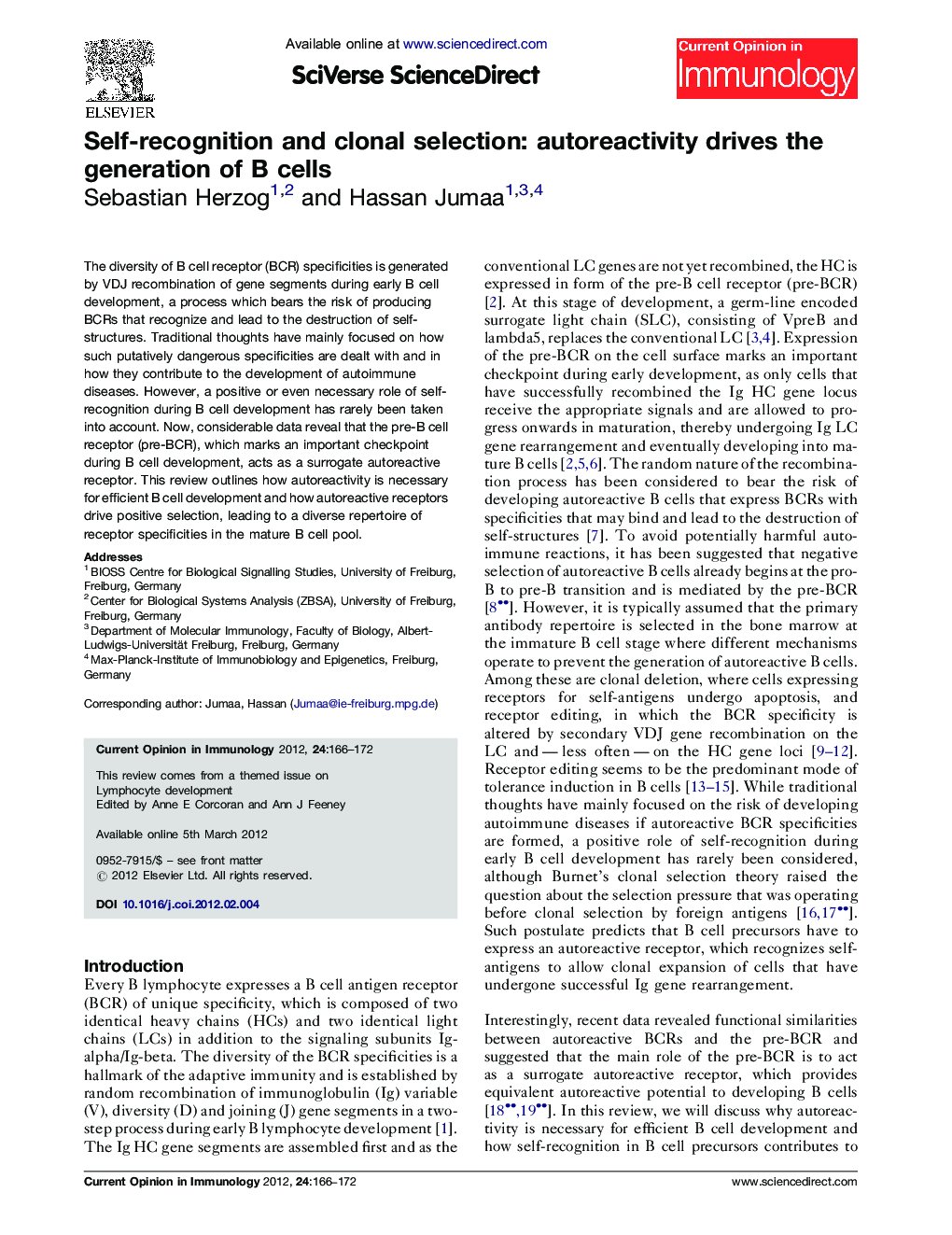| کد مقاله | کد نشریه | سال انتشار | مقاله انگلیسی | نسخه تمام متن |
|---|---|---|---|---|
| 3346162 | 1215773 | 2012 | 7 صفحه PDF | دانلود رایگان |

The diversity of B cell receptor (BCR) specificities is generated by VDJ recombination of gene segments during early B cell development, a process which bears the risk of producing BCRs that recognize and lead to the destruction of self-structures. Traditional thoughts have mainly focused on how such putatively dangerous specificities are dealt with and in how they contribute to the development of autoimmune diseases. However, a positive or even necessary role of self-recognition during B cell development has rarely been taken into account. Now, considerable data reveal that the pre-B cell receptor (pre-BCR), which marks an important checkpoint during B cell development, acts as a surrogate autoreactive receptor. This review outlines how autoreactivity is necessary for efficient B cell development and how autoreactive receptors drive positive selection, leading to a diverse repertoire of receptor specificities in the mature B cell pool.
► B cell receptor specificities are generated in a random process.
► Autoreactive specificities have been traditionally considered as harmful.
► New data identify the pre-B cell receptor as a surrogate autoreactive receptor.
► Self-recognition in B cell precursors is necessary for their efficient development.
► Autoreactivity contributes to the diversity of receptor specificities.
Journal: Current Opinion in Immunology - Volume 24, Issue 2, April 2012, Pages 166–172